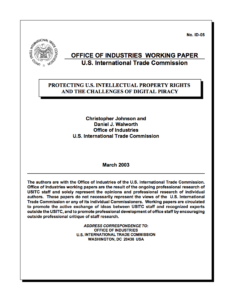 Loose cyber-lips can sink real ship. According to separate reports published by the British government and the cruise ship industry, large cargo and passenger vessels could be damaged by cyberattacks – and potentially even sent to the bottom of the ocean.
Loose cyber-lips can sink real ship. According to separate reports published by the British government and the cruise ship industry, large cargo and passenger vessels could be damaged by cyberattacks – and potentially even sent to the bottom of the ocean.
The foreword pulls no punches. “Code of Practice: Cyber Security for Ships” was commissioned by the U.K. Department of Transport, and published by the Institution of Engineering and Technology (IET) in London.
Poor security could lead to significant loss of customer and/or industry confidence, reputational damage, potentially severe financial losses or penalties, and litigation affecting the companies involved. The compromise of ship systems may also lead to unwanted outcomes, for example:
(a) physical harm to the system or the shipboard personnel or cargo – in the worst case scenario this could lead to a risk to life and/or the loss of the ship;
(b) disruptions caused by the ship no longer functioning or sailing as intended;
(c) loss of sensitive information, including commercially sensitive or personal data;
and
(d) permitting criminal activity, including kidnap, piracy, fraud, theft of cargo, imposition of ransomware.
The above scenarios may occur at an individual ship level or at fleet level; the latter is likely to be much worse and could severely disrupt fleet operations.
Cargo and Passenger Systems
The report goes into considerable detail about the need to protect confidential information, including intellectual property, cargo manifests, passenger lists, and financial documents. Beyond that, the document warns about dangers from activist groups (or “hackivism”) where actors might work to prevent the handling of specific cargoes, or even disrupt the operation of the ship. The target may be the ship itself, the ship’s owner or operator, or the supplier or recipient of the cargo.
The types of damage could be as simple as the disruption of ship-to-shore communications through a DDoS attack. It might be as dangerous as the corruption or feeding false sensor data that could cause the vessel to flounder or head off course. What can done? The reports several important steps to maintain the security of critical systems including:
(a) Confidentiality – the control of access and prevention of unauthorised access to ship data, which might be sensitive in isolation or in aggregate. The ship systems and associated processes should be designed, implemented, operated and maintained so as to prevent unauthorised access to, for example, sensitive financial, security, commercial or personal data. All personal data should be handled in accordance with the Data Protection Act and additional measures may be required to protect privacy due to the aggregation of data, information or metadata.
(b) Possession and/or control – the design, implementation, operation and maintenance of ship systems and associated processes so as to prevent unauthorised control, manipulation or interference. The ship systems and associated processes should be designed, implemented, operated and maintained so as to prevent unauthorised control, manipulation or interference. An example would be the loss of an encrypted storage device – there is no loss of confidentiality as the information is inaccessible without the encryption key, but the owner or user is deprived of its contents.
(c) Integrity – maintaining the consistency, coherence and configuration of information and systems, and preventing unauthorised changes to them. The ship systems and associated processes should be designed, implemented, operated and maintained so as to prevent unauthorised changes being made to assets, processes, system state or the configuration of the system itself. A loss of system integrity could occur through physical changes to a system, such as the unauthorised connection of a Wi-Fi access point to a secure network, or through a fault such as the corruption of a database or file due to media storage errors.
(d) Authenticity – ensuring that inputs to, and outputs from, ship systems, the state of the systems and any associated processes and ship data, are genuine and have not been tampered with or modified. It should also be possible to verify the authenticity of components, software and data within the systems and any associated processes. Authenticity issues could relate to data such as a forged security certificate or to hardware such as a cloned device.
With passenger vessels, the report points for the need for modular controls and hardened IT infrastructure. That stops unauthorized people from gaining access to online booking, point-of-sales, passenger management, and other critical ships systems by tapping into wiring cabinets, cable junctions, and maintenance areas. Like we said, scary stuff.
The Industry Weighs In
A similar report was produced for the shipping industry by seven organizations, including the International Maritime Organization and the International Chamber of Shipping. The “Guidelines on Cyber Security Onboard Ships” warns that that incident can arise as the result of,
- A cyber security incident, which affects the availability and integrity of OT, for example corruption of chart data held in an Electronic Chart Display and Information System (ECDIS)
- A failure occurring during software maintenance and patching
- Loss of or manipulation of external sensor data, critical for the operation of a ship. This includes but is not limited to Global Navigation Satellite Systems (GNSS).
This report discusses the role of activists (including disgruntles employees), as well as criminals, opportunists, terrorists, and state-sponsored organizations. There are many potentially vulnerable areas, including cargo management systems, bridge systems, propulsion and other machinery, access control, passenger management systems — and communications. As the report says,
Modern technologies can add vulnerabilities to the ships especially if there are insecure designs of networks and uncontrolled access to the internet. Additionally, shoreside and onboard personnel may be unaware how some equipment producers maintain remote access to shipboard equipment and its network system. The risks of misunderstood, unknown, and uncoordinated remote access to an operating ship should be taken into consideration as an important part of the risk assessment.
The stakes are high. The loss of operational technology (OT) systems “may have a significant and immediate impact on the safe operation of the ship. Should a cyber incident result in the loss or malfunctioning of OT systems, it will be essential that effective actions are taken to ensure the immediate safety of the crew, ship and protection of the marine environment.”
Sobering words for any maritime operator.




 At the current rate of rainfall, when will your local reservoir overflow its banks? If you shoot a rocket at an angle of 60 degrees into a headwind, how far will it fly with 40 pounds of propellant and a 5-pound payload? Assuming a 100-month loan for $75,000 at 5.11 percent, what will the payoff balance be after four years? If a lab culture is doubling every 14 hours, how many viruses will there be in a week?
At the current rate of rainfall, when will your local reservoir overflow its banks? If you shoot a rocket at an angle of 60 degrees into a headwind, how far will it fly with 40 pounds of propellant and a 5-pound payload? Assuming a 100-month loan for $75,000 at 5.11 percent, what will the payoff balance be after four years? If a lab culture is doubling every 14 hours, how many viruses will there be in a week?
 To think, the U.S. Secretary of State wants to send me money! Interesting that he’s using a gmail.com address for outgoing mail, a German email address for replies, and a phone number in the African country of Benin.
To think, the U.S. Secretary of State wants to send me money! Interesting that he’s using a gmail.com address for outgoing mail, a German email address for replies, and a phone number in the African country of Benin. The water is rising up over your desktops, your servers, and your data center. Glug, glug, gurgle.
The water is rising up over your desktops, your servers, and your data center. Glug, glug, gurgle. The more advanced the military technology, the greater the opportunities for intentional or unintentional failure in a cyberwar. As Scotty says in Star Trek III: The Search for Spock, “The more they overthink the plumbing, the easier it is to stop up the drain.”
The more advanced the military technology, the greater the opportunities for intentional or unintentional failure in a cyberwar. As Scotty says in Star Trek III: The Search for Spock, “The more they overthink the plumbing, the easier it is to stop up the drain.” The late, great science fiction writer Isaac Asimov frequently referred to the “
The late, great science fiction writer Isaac Asimov frequently referred to the “ People Queue Magazine has a fascinating new article, “
People Queue Magazine has a fascinating new article, “


 “Thou shalt not refer winkingly to my taking off my robe after worship as disrobing.” A powerful new essay by Pastor Melissa Florer-Bixler, “
“Thou shalt not refer winkingly to my taking off my robe after worship as disrobing.” A powerful new essay by Pastor Melissa Florer-Bixler, “ This is what Daffy Duck would describe as “dethpicable.” Absolutely deplorable.
This is what Daffy Duck would describe as “dethpicable.” Absolutely deplorable. General
General 
 It’s almost painful to see an issue of
It’s almost painful to see an issue of  Here are a few excerpts from one of the most important articles on leadership ever published. “
Here are a few excerpts from one of the most important articles on leadership ever published. “







 Twenty years ago, my friend Philippe Kahn introduced the first camera-phone. You may know Philippe as the founder of Borland, and as an entrepreneur who has started many companies, and who has accomplished many things. He’s also a sailor, jazz musician, and, well, a fun guy to hang out with.
Twenty years ago, my friend Philippe Kahn introduced the first camera-phone. You may know Philippe as the founder of Borland, and as an entrepreneur who has started many companies, and who has accomplished many things. He’s also a sailor, jazz musician, and, well, a fun guy to hang out with. Hacking can kill. To take the most obvious example, take ransomware. One might argue that
Hacking can kill. To take the most obvious example, take ransomware. One might argue that  March 2003: The U.S. International Trade Commission released a 32-page paper called, “
March 2003: The U.S. International Trade Commission released a 32-page paper called, “ According to a depressing story in Harvard Business Review, venture capitalists consider female entrepreneurs to be quite different than males. The perceived difference is not good. According to the May 17, 2017, story, “
According to a depressing story in Harvard Business Review, venture capitalists consider female entrepreneurs to be quite different than males. The perceived difference is not good. According to the May 17, 2017, story, “ From eWeek’s story, “
From eWeek’s story, “









 In the United States, Sunday, May 14, is Mother’s Day. (Mothering Sunday was March 27 this year in the United Kingdom.) This is a good time to reflect on the status of women of all marital status and family situations in information technology. The results continue to disappoint.
In the United States, Sunday, May 14, is Mother’s Day. (Mothering Sunday was March 27 this year in the United Kingdom.) This is a good time to reflect on the status of women of all marital status and family situations in information technology. The results continue to disappoint. To those who run or serve on corporate, local government or non-profit boards:
To those who run or serve on corporate, local government or non-profit boards: In 2016, Carnival Cruises was alleged to have laid off its entire 200-person IT department – and
In 2016, Carnival Cruises was alleged to have laid off its entire 200-person IT department – and